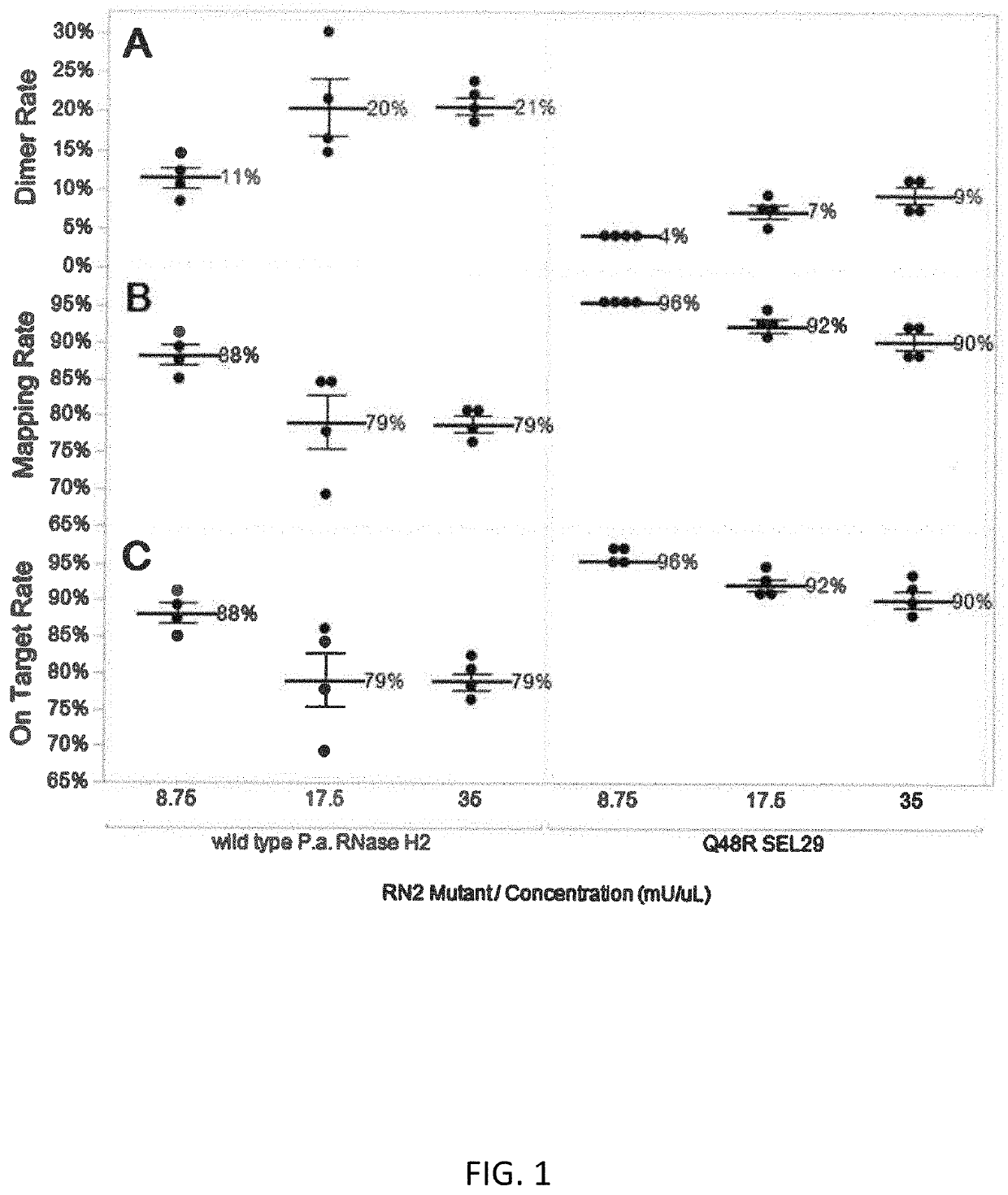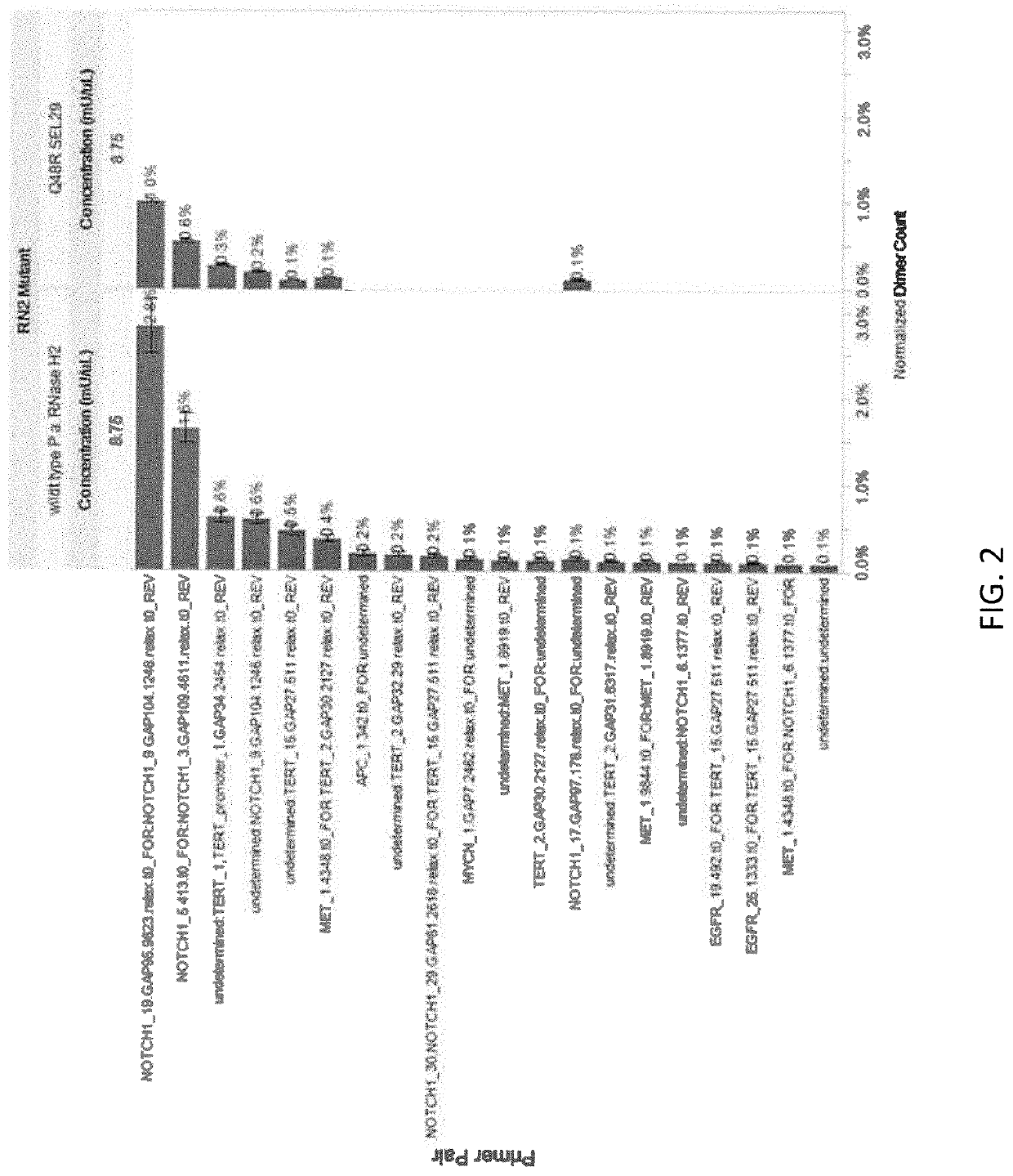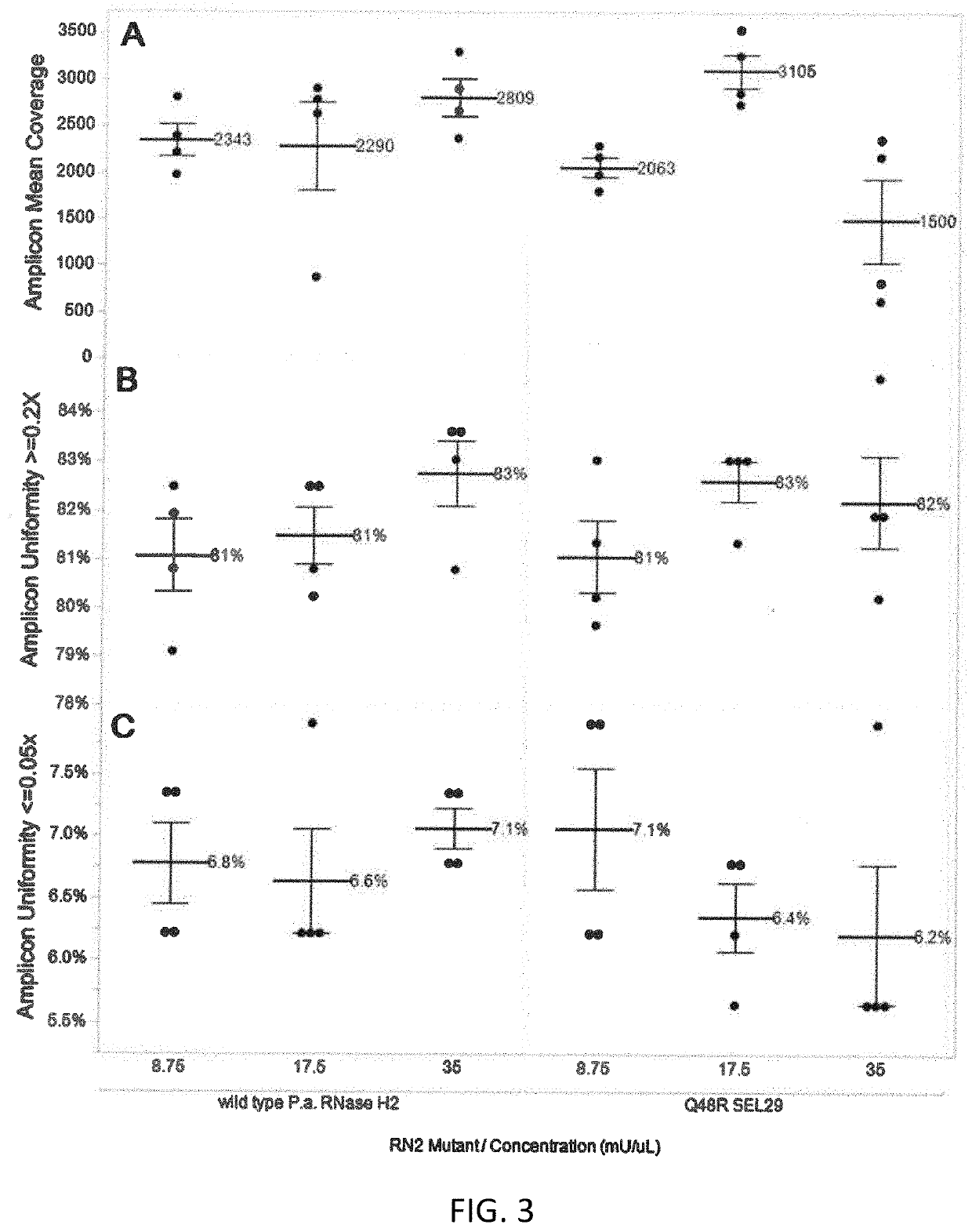Rnase h2 mutants that reduce primer dimers and off-target amplification in rhpcr-based amplicon sequencing with high-fidelity DNA polymerases
a rnase and h2 technology, applied in the field of type ii rnase h2, can solve the problems of primer dimer amplification, mismatch discrimination of wild type, and limitations of current results
- Summary
- Abstract
- Description
- Claims
- Application Information
AI Technical Summary
Benefits of technology
Problems solved by technology
Method used
Image
Examples
example 1
n of SEL28 and SEL29 Hybrid RNase H2 Proteins Via Recombination Reshuffling
[0091]Mutant RNase H2 proteins were synthesized using in vitro DNA recombination and directed molecular evolution techniques. Altravax™ Inc. (Sunnyvale, Calif.) generated a library of 5,500 mutants under the contract agreement with Integrated DNA Technologies. SEL28 and SEL29 mutants were selected in initial screening done in IDT where the mutants exhibited increased mismatch discrimination in an RNase H2 cleavage reaction. The mutants were created in pET-27b(+) plasmid vector inside of Escherichia co / i (E. co / i) BL21 (DE3). Expressed proteins based on T7 system contain a pelB signal sequence at the N-terminus, mutated RNase H2 genes, a human herpes simplex virus 2 epitope tag, and a six-histidine tag at the C-terminus. E. coli cells were grown in 12 mL of LB Broth with 50 μg / mL kanamycin (Teknova™, Hollister, CA) using 50 mL TPP TubeSpin® Bioreactors (Techno Plastic Products AG, Trasadingen, Switzerland). Ex...
example 3
9 and A107V SEL29 RNase H2 Increase Mismatch Discrimination Compared to WT RNase H2 when the Mismatch is Placed Opposite of the RNA
[0096]The specific activity of the enzyme was determined using a fluorescence-based kinetic assay. The sequences for the DNA substrates are shown in Table 6, SEQ ID NOs.: 24-25. The substrate is a DNA hairpin with a matched RNA base within the double-stranded region. Attached to the 3′ end of the probe is a 6-FAM (6-carboxyfluorescein); attached to the 5′ end of the probe is an Iowa Black® FQ (SEQ ID NO.: 24). The fluorescence of the 6-FAM is quenched by the Iowa Black® FQ moiety in the intact hairpin probe. RNase H2 cleaves 5′ of the RNA base and releases the 3′ end of the probe with the 6-FAM. Thus, the fluorescence of the 6-FAM is no longer be quenched and can fluoresce. A DNA hairpin with the RNA base but without the fluorophore or the quencher was used as a competitor (SEQ ID NO.: 25). Assays were performed in 10 μL reaction volumes. Data collection...
example 4
9 and A107V SEL29 RNase H2 Increase Mismatch Discrimination Compared to WT RNase H2 when the Mismatch is Placed 5′ of the RNA
[0099]To determine the degree of mismatch discrimination when the mismatch is located 5′ of the RNA nucleotide using the Q48R SEL29 and A107V SEL29 RNase H2 enzymes, an assay targeting rs113488022—the V600E SNP in the human BRAF gene—was designed with the SNP located immediately 5′ of the RNA. The primers used in this assay are shown in Table 10, SEQ ID NOs.: 36-39. Assays were run in 10 μL reaction volumes. Thermal cycling and data collection were run on a CFX384® Real Time System (Bio-Rad®, Hercules, Calif.). Briefly, either 200 nM (2 pmol) of a blocked forward primer (SEQ ID NOs.: 38 or 39) and 200 nM (2 pmol) of the unblocked reverse primer (SEQ ID NO.: 37), or 200 nM (2 pmol) of the unblocked forward primer (SEQ ID NO.: 36) and 200 nM (2 pmol) of the unblocked reverse primer (SEQ ID NO.: 37) were mixed into 1× iQ™ SYBR® Green Supermix®. 5 mU or 10 mU of W...
PUM
 Login to View More
Login to View More Abstract
Description
Claims
Application Information
 Login to View More
Login to View More - R&D
- Intellectual Property
- Life Sciences
- Materials
- Tech Scout
- Unparalleled Data Quality
- Higher Quality Content
- 60% Fewer Hallucinations
Browse by: Latest US Patents, China's latest patents, Technical Efficacy Thesaurus, Application Domain, Technology Topic, Popular Technical Reports.
© 2025 PatSnap. All rights reserved.Legal|Privacy policy|Modern Slavery Act Transparency Statement|Sitemap|About US| Contact US: help@patsnap.com



